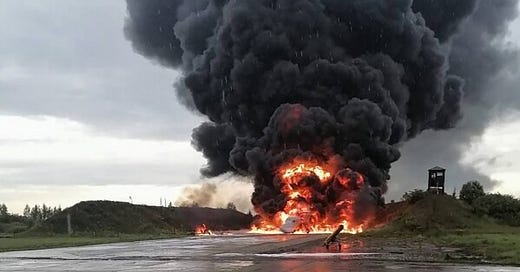The prominent role of Uncrewed Aerial Vehicles (UAVs), better known as drones, in the Russo-Ukraine War has led to suggestions that we are witnessing a transformational moment in the conduct of war, and can now look forward towards futuristic robotic conflicts fought between machines, loosely controlled by distant humans. Before we get quite that far we can expect to see drones performing an increasing range of military tasks, as a relatively inexpensive way of finding and hitting distant targets.
Drones have been around for almost as long as manned aircraft, but gained attention early in this century as the Americans began to use them as part of the ‘war on terror.’ By the time of President Obama’s first term there were used regularly for targeted assassinations, notably in Afghanistan and Pakistan, justified as a means of reducing threats without having to put troops in harm’s way. Eventually Obama worried about the ethical and legal implications of these attacks. Too often the intelligence was poor and innocents were killed because they suddenly moved into the line of fire without any reason to know they were in danger.
The easy availability of inexpensive commercial drones allowed them to be used by rebels and insurgents to fight stronger armies. During the Syrian civil war repurposed civilian drones began to appear as a simple means of dropping grenades on enemy units in close encounters in urban environments. When Hamas launched its attack on Israel on 7 October 2023, it used off-the-shelf drones to hit cameras and communication towers along the Gaza border to enable its men to advance undetected into Israel.
Once Israel, a pioneer in the development of drones, and with long experience of using them to operate in hostile areas, got the upper hand it used them to survey and increasingly attack Palestinian targets, as well as support ground operations. There have been reports of the use of ‘sniper’ drones, which carry lightweight firearms that can shoot at targets when triggered by remote operators. These have been blamed for many civilian casualties. Robotic versions of other vehicles, including bulldozers, have also been reported.
What makes drone warfare in the Russo-Ukraine War different is that this is a fight between two regular armies. It has been going on long enough to have encouraged innovation in technology and tactics. After the full-scale invasion of February 2022, large drones, essentially unmanned aircraft, such as the Turkish Bayraktar, made a mark until the Russians learned how to deal with them. They were full of expensive equipment yet vulnerable to enemy defences. As they faded away from the front-line there was a shift to smaller and ever more versatile drones that could be mass produced and were sufficiently cheap to be expendable.
Some drones can be used a number of times, often more for surveillance than attack, but most now are used only once. They can be configured for a variety of ranges, so that some can attack targets well to the rear. Support of front-line operations is now dominated by FPV (First Person View) Drones. These have a distinctive square shape, with a propeller at each corner, flying directly into targets, where they can detonate an explosive charge of up to 1.5 kg. Last year both sides produced about a million of these. This year both expect to produce three to four million.
Keep reading with a 7-day free trial
Subscribe to Comment is Freed to keep reading this post and get 7 days of free access to the full post archives.




